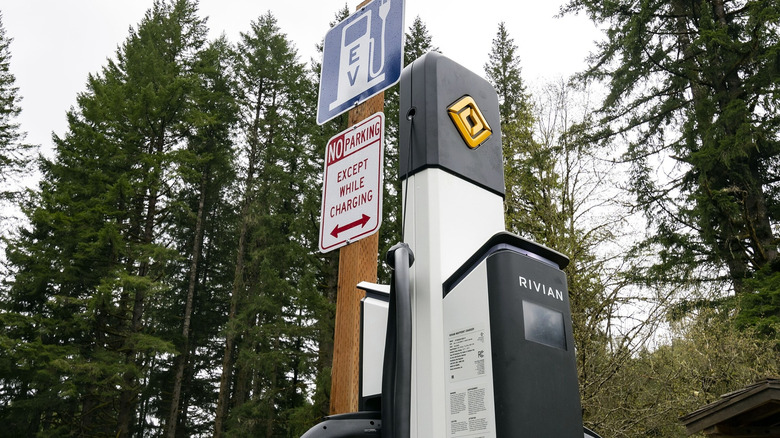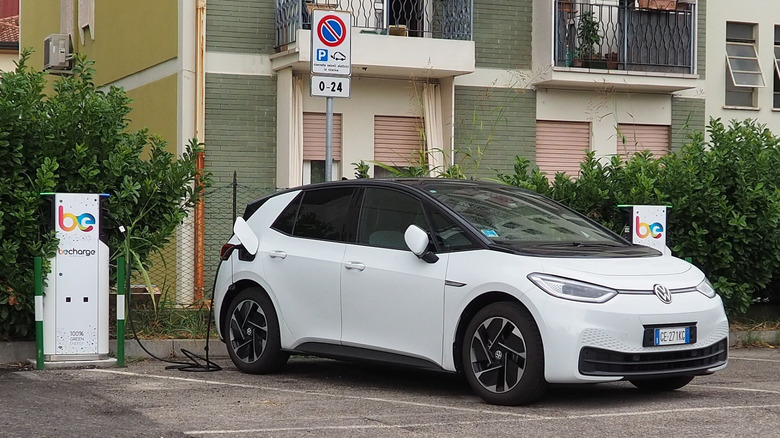The Most Common Charging Problem With EVs (And How To Avoid It)
Thanks to EV critics, many people believe the most common reasons behind slow EV adoption are unfamiliarity with the product, concerns about lithium mining, and battery recycling. They are wrong! The biggest concerns slowing down EV adoption are the initial cost of ownership, range anxiety, and—drumroll—charging issues.
Earlier in the year, Consumer Reports, through its EV Charging Community ( about 1,230 EV owners), conducted a survey to get a better idea of the current EV public charging experience. Based on the feedback from the survey, a number of worrying issues came to light.
For starters, EV users experienced issues with public chargers about 20% of the time. Let's be positive and conclude that public chargers work perfectly 80% of the time. Still, it doesn't change the fact that 246 out of 1,230 surveyors experienced some sort of issue charging their EV at a public facility. Worse, DC fast chargers had problems 34% of the time, while Level 2 Chargers were better at 25%. Unfortunately, these are not problems EV owners can solve.
Public EV charging can be a headache
According to the survey, hardware problems are the biggest concern, with issues such as broken plugs, short cables, and malfunctioning screens. An EV owner in a popular on Reddit raised concerns about an EA charger's unreadable screen (due to excessive heat). Interestingly, the survey confirms screen issues accounted for 76% of hardware issues experienced at EV public charging stations.
Payment issues are perhaps the most frustrating experience when it comes to charging electric vehicles. It's worse when you have to queue or drive a couple of miles just to experience payment glitches. According to the survey, 19% of the payment issues occurred after the charging stations accepted payment but did not initiate charging. The charger brand also matters. Tesla and Rivian networks had fewer reported issues, 4% and 5% of the time, respectively, while Shell and EVgo, on the other hand, had higher problem ratings, 48% and 43%, respectively.
Last year, The Wall Street Journal tested 30 non-Tesla EV charging locations in Los Angeles (downtown to Santa Monica), and their findings were similar to those found by Consumer Reports. Unfortunately, many of the charging stations documented in the WSJ story were either broken or out of service due to connectivity issues or experienced payment failures.
How to avoid charging pitfalls
Even though EVs have been around for more than two decades, there are still some growing pains. Fortunately, there are a few things you can do to reduce these problematic encounters when charging your electric vehicle.
As annoying as it may sound, the best recourse for public charging station issues is charging apps. Prepare for your trip by installing multiple charging apps like Chargeway and PlugShare. A GMC electric owner was advised on Reddit to use apps like PlugShare to help filter out charging stations where they'd potentially encounter issues. Also, don't forget to add a payment option for each app. This final step can help reduce issues with payment and app compatibility.
You also don't need to charge your EV to 100%. Electric vehicle batteries charge more efficiently between 0 % and 80%. Also, just like a gas-powered vehicle, you don't have to wait until your battery is empty to recharge; in fact, it's harmful to the battery's health to do so. If you can, add a Level 2 charger at home. It will reduce all the headache that comes with public charging. And lastly, if you are suffering from range anxiety, getting an EV with more than 300 miles will help calm your nerves. Still, there's no fail-safe measure of avoiding public charging issues, so the best course of action is to always be prepared.


